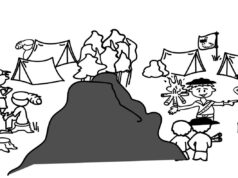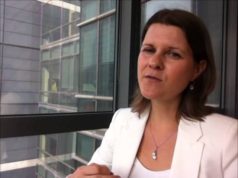Authored by Dr. Brian Mitchell and Co-Authored by Evan Mitchell, Co-Founder & Digital Culture Specialist at HOW&Y
Mozart To Dylan – Turning Conflict To Creativity
Two different kinds of right
Tragedy… is not a conflict between right and wrong, but between two different kinds of right.
– lines from playwright/screenwriting star Peter Shaffer, whose works include the Oscar-orgy Amadeus (eleven nominations, eight wins), a biopic of Mozart, who had no shortage of conflict in his own brief life.
Shaffer’s view of the hazardous effects of conflict between right on different sides is not only a blueprint for effective tragic irony on stage and screen – it has clear parallels in the modern organization.
Cross-functional team disagreements, performance reviews, out-sourcing, task allocations, re-allocation of assets, competing inter/intra department priorities, contract re-negotiations, management handling of employee grievances, let alone ongoing dealings with vendors and clients … these aren’t conducted between one person wearing a white Stetson and the other a black.
When each party naturally perceives right on their side, being oblivious to the “different kind of right” on the other side becomes all too easy. And these are not rare events. Add in simple misunderstandings, which are also prey to conflict, and we’re looking at a bundle of workplace waste.
The fact is, every point of contact in an organization is a potential point of conflict.
The conflict itself is not the problem. That’s a given in any grouping of people, particularly one with the formal and informal dynamics of an organization. It becomes so when it’s failed to be dealt with rationally. That’s when we see the toxic effects – on organizational relations, morale, engagement and retention, and culture.
Cultural Myopia (Lack of Foresight)
Digital culture is now upstream of corporate culture. Its accompaniments – a transformed customer experience, sharper marketing, an agile and innovative focus, creative disruption of hidebound organizational practices, a curious and digitally-savvy workforce – have been boons to business. But it shouldn’t be heretical to accept that these have come with a significant downside – the inability to understand or constructively deal with conflict, which is becoming endemic in organizations.
Digital culture, by its very nature, has driven a wholesale shift towards mindsets driven by conflict (social media is one graphic example) and a zero-sum conception of disputes and their resolution.
_____
READ ALSO: 10 Effective Conflict Resolution Steps in Project Management (Video)
_____
It’s fostered a “hide or harden” mentality that sees individuals and teams avoid the conflict problem for as long as possible (allowing it to fester). When it’s finally unavoidable, they double down on their own position, resistant to viewing things from any side but theirs. Digital culture has spawned an adversarial (conflict) relations model that swamps opportunities for value creation.
Employees themselves aren’t to blame for this. Nobody’s looking to deliberately undermine the good of the organization, or even their own department, their relations up, down and across. Nobody’s looking to sabotage morale.
Facing conflicting views of a situation involving them, they’re predisposed, preconditioned if you like, to act in what often turns out to be the worst way possible – damaging to their own interests and those of the organization.
From Film to Fashion, and…
Fashion houses have always had to be agile in ways that organizations have only more recently aimed to claim.
“Creativity comes from the conflict of ideas.”
This quote, from the House of Versace, in a simple way, highlights the symbiotic relationship between two seeming opposites: conflict is integral to success in the fashion industry. What of elsewhere?
Conflict is talked about within organizations, but as a matter of irritation and frustration, not as a pressing issue. As “the poor will always be with us”, so it must be with conflict.
But that is quickly changing. Organizations and their HR departments are being more and more mugged by reality.
When publications as influential and diverse as Harvard Business Review, Harvard Law School Program, Chicago Tribune, The Wall Street Journal, Forbes magazine, BrainWorld, The Leadership Quarterly, The Chronicle of Higher Education, Gallup, LinkedIn, and a raft of psychological studies, all point to increasingly persistent problems in interpersonal relationships and the handling of workplace conflict, it’s time for everyone to wake up.
But Wake Up to what – to do What?
Individuals have long been sent on courses to learn techniques for conflict or dispute resolution. These are often set in more than one context to encourage the transfer of skill. But skill is not the only or even the main challenge in the current situation. This conflict outbreak is propelled by socio-cultural forces that are pervasive.
The digital culture generates its own mindset, which becomes the default mode. It’s tough for skills to become a positive habit when they’re competing with a mindset that’s biased to self-interest in ways that veer towards being harmful.
And that’s a fair description of what the digital culture gives rise to as a logical consequence of attitudes, beliefs and social tendencies that are shaped by developing technology and its changing societal consequences.
We’ve identified a trio of characteristics that determine how an individual is likely to approach conflict in the workplace. It’s safe to assume that the population within an organization would fall within a normal distribution on such tendencies. It is, in other words, a description of the majority rather than the minority.
One of them is the capacity to adopt a broad perspective – that is “seeing the big picture.”
The self-interest bias effect of digital culture likely skews the curve here towards the negative end, pointing to a lack in the ability of ‘seeing the bigger picture’.
The same with collaborativeness, the second determining factor. Likewise, concerning evidence that continues to emerge on the workplace decline of collaboration, along with other attributes associated with Emotional Intelligence.
Which Leaves Us…
… saying once again – every point of contact within an organization is a potential point of conflict. And conflict itself takes second place to the mindset with which it’s approached, by all means by skilled people in dispute resolution (which will come down to negotiation, so be sure to get that right – sales and organizational negotiation principles and techniques are very different, and damaging if used interchangeably.)
It’s not a matter of right and wrong, but of perception. When an individual’s or team’s approach to conflict is mindless, it matters not whether it’s right or wrong – the outcome will be deficient from the organization’s viewpoint.
Caught in the middle of all this is HR since the buck stops with them for these kinds of problems. As disputes should be resolved at the source, they increasingly end up in their court to be further examined.
A Nobel Viewpoint
We came in with a classical icon. We’ll leave with a pop-cultural one – albeit a Nobel Prize-winning one. Bob Dylan’s “The Times They Are a-Changin’” rounds out our theme, with a message for those who are content to see the problem but not hear the vibe:
Don’t stand in the doorway
Don’t block up the hall
For he that gets hurt
Will be he who has stalled…
A good start in avoiding this is to establish the extent of the mindset challenge within your organization – and where the focus should start.
In a follow-up article, we’ll address a method of measuring this largely hidden problem – the critical first step. The solution, reassuringly and refreshingly, comes as the easy part.
SOURCES
- Dylan, Bob, “The Times, They Are a-Changin’” in The Definitive Bob Dylan Songbook, Amsco Publications, UK, 1964.
- Gasca, Peter, “History’s creative minds say you don’t have to be original to be creative” Entreprenuer.com on NBCNews.com, 2014. http://www.nbcnews.com/id/55990527/ns/business-small_business/t/historys-inventive-minds-say-you-dont-have-be-original-be-creative/#.XJGraLjZVPY.
- Shaffer, Peter, quoted in MacMurraugh-Kavanagh, M K. Peter Shaffer Theatre, and Drama, Palgrave MacMillan, London, 1998.
- Lax, D, and Sebenius, J, The Manager as Negotiator: Bargaining for Cooperation and Competitive Gain, Free Press, New York, 1986.
- Sebenius, J, “BATNAs in Negotiation: Common Errors and Three Kinds of ‘No’”, Harvard Business School Working Paper, 2016.
- Mitchell, Brian, and Mitchell, Evan “The Digital Erosion of Emotional Intelligence” BIZCATALYST360°, 2019.
- Andrzej W. Kozina, “Managerial Roles and Function in Negotiation Process”, Business, Management and Education, 12(1): 94–108, 2014.
Author of Mozart To Dylan – Turning Conflict To Creativity, Dr. Brian Mitchell
AFTER a Ph.D. in Psychology at the University of Sydney, Brian Mitchell spent several years in clinical practice before moving into consulting with the Mandev International group.
He became President of the North American, Asian, and Australian operations, and an international speaker on the subject of retail sales productivity.
In the mid-1990s Brian established Mitchell Performance Systems (MPS), working with CPG industry leaders in the US, on systems to improve sales and negotiation outcomes with retailers.
He has completed three books in collaboration with Evan Mitchell – including the 2009 Praeger publication The Psychology of Wine, now released in a revised eBook edition.
A joint paper in 2013 to the 7th International WineHealth conference highlighted the dangers facing the wine industry from generational trends. He is Co-founder of HOW&Y, a group specializing in the Millennial generation – as both consumers and employees.









Extraordinary insights presented here by Brian & Evan… Thanks for sharing!
We absolutely enjoy this article and are so pleased to be given the chance of sharing it with our readers. Thank you.